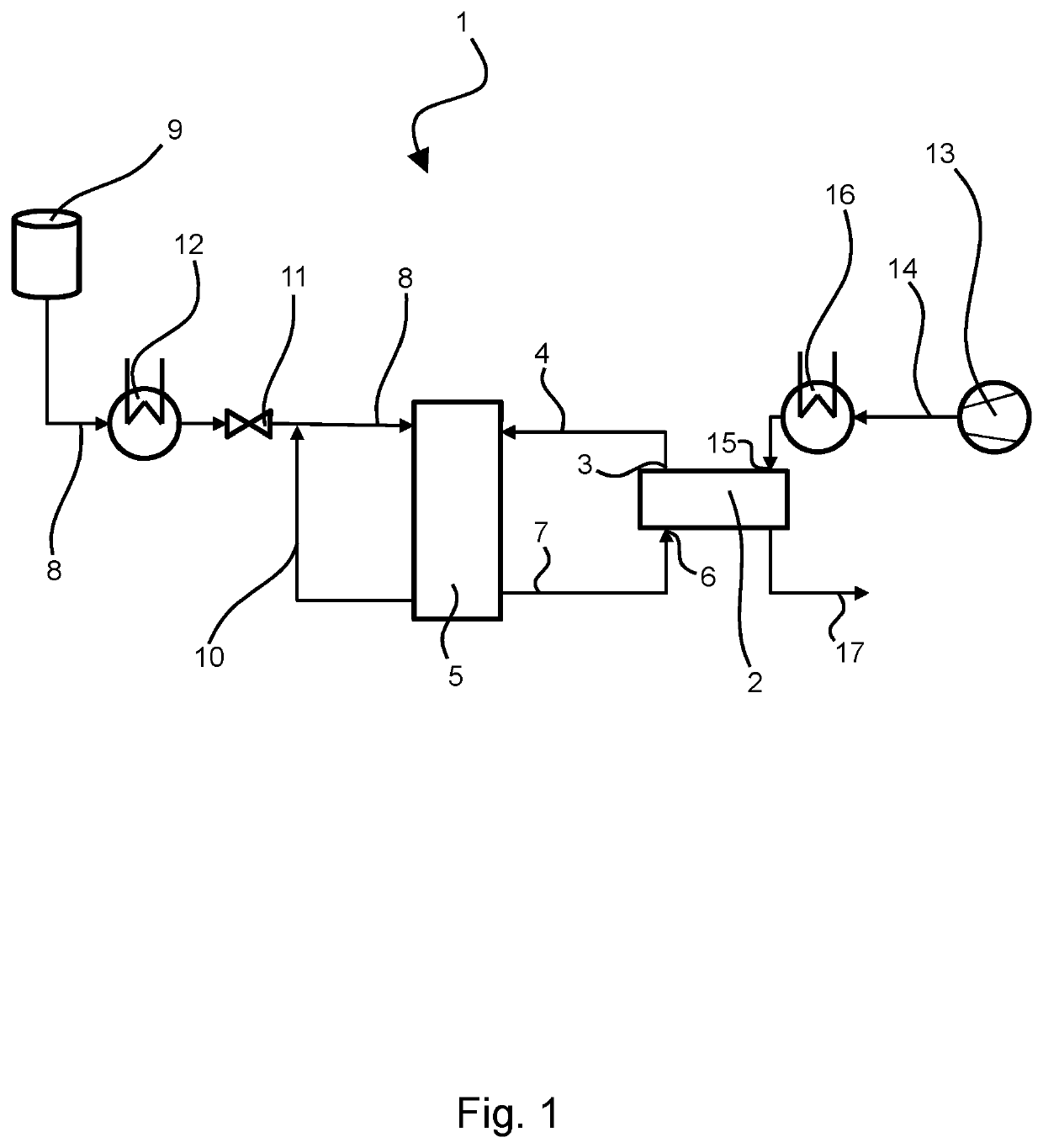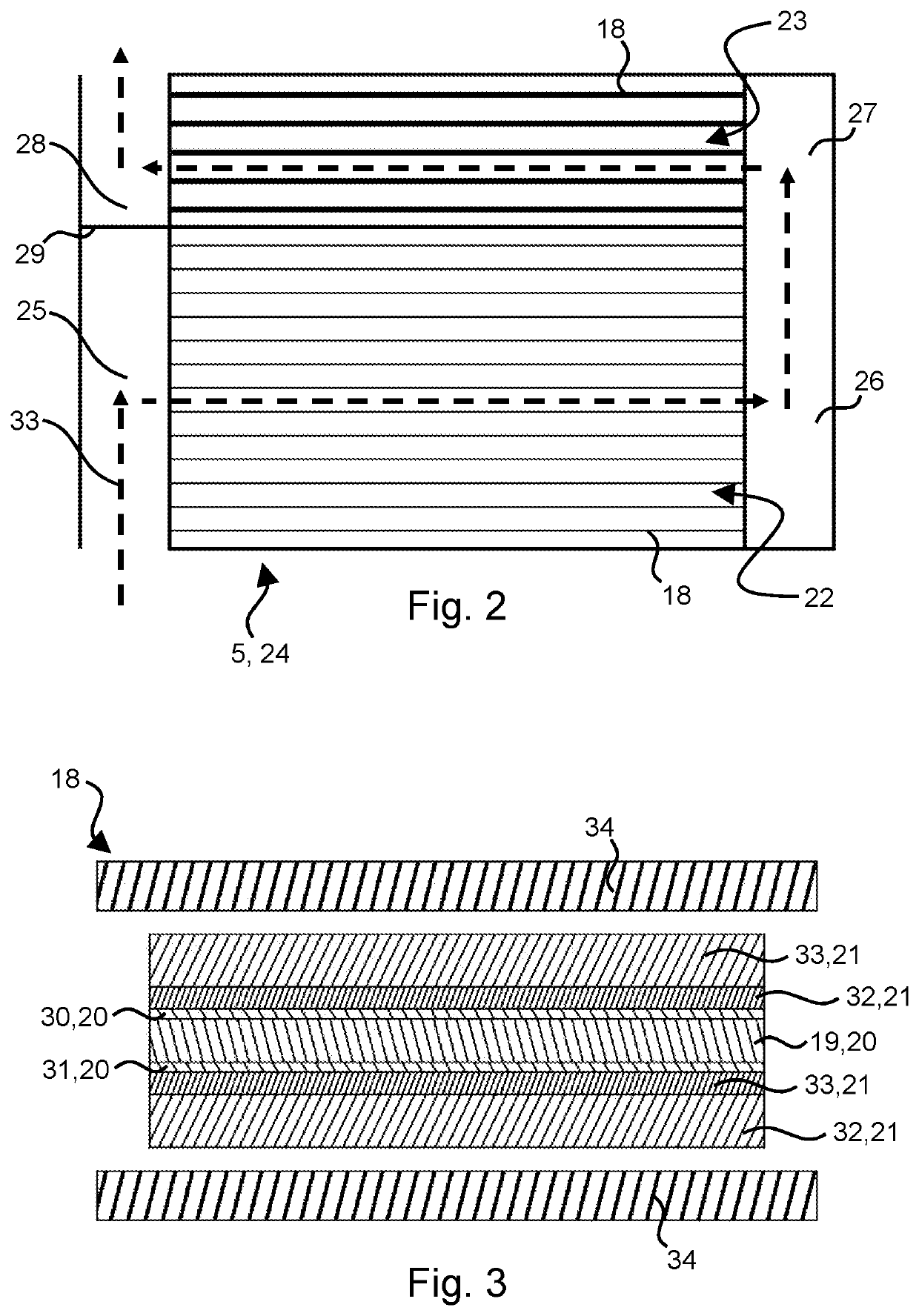Cascaded fuel cell stack and fuel cell system
a fuel cell and cascade technology, applied in the field of cascaded fuel cell stack and fuel cell system, can solve the problems of operational instabilities and water accumulation risk, and achieve the effect of optimizing water management and stable operation
- Summary
- Abstract
- Description
- Claims
- Application Information
AI Technical Summary
Benefits of technology
Problems solved by technology
Method used
Image
Examples
Embodiment Construction
[0019]FIG. 1 shows a fuel cell system 1 which has a humidifier 2 on the cathode side. With its cathode-side outlet 3, the humidifier 2 is connected via a cathode supply line 4 to cathode spaces of a cascaded fuel cell stack 5. In addition, the humidifier 2 is connected with its cathode-side inlet 6 to the cathode spaces via a cathode exhaust gas line 7 through which unreacted cathode gas or moist cathode exhaust gas is returned to the humidifier 2. The cathode gas (e.g., air or oxygen) can be routed through the cathode spaces to the cathodes 30 of the plurality of fuel cells 18 arranged in the cascaded fuel cell stack 5. The cathode gas is drawn in by means of a compressor 13 and then introduced into a supply line 14. In the example shown, the incoming compressed cathode gas is cooled by means of a (recuperative) heat exchanger 16 before being fed into a cathode gas inlet 15 of the humidifier 2 for humidification. The humidifier 2 is composed of a plurality of water-vapor-permeable ...
PUM
| Property | Measurement | Unit |
|---|---|---|
| thickness | aaaaa | aaaaa |
| thickness | aaaaa | aaaaa |
| thickness | aaaaa | aaaaa |
Abstract
Description
Claims
Application Information
 Login to View More
Login to View More - R&D
- Intellectual Property
- Life Sciences
- Materials
- Tech Scout
- Unparalleled Data Quality
- Higher Quality Content
- 60% Fewer Hallucinations
Browse by: Latest US Patents, China's latest patents, Technical Efficacy Thesaurus, Application Domain, Technology Topic, Popular Technical Reports.
© 2025 PatSnap. All rights reserved.Legal|Privacy policy|Modern Slavery Act Transparency Statement|Sitemap|About US| Contact US: help@patsnap.com


